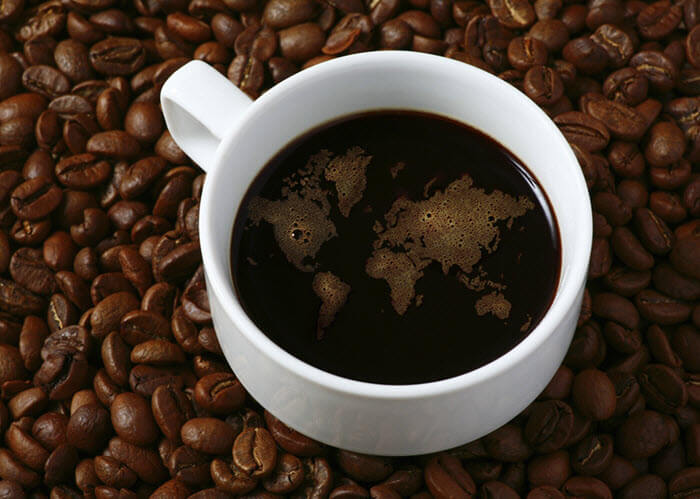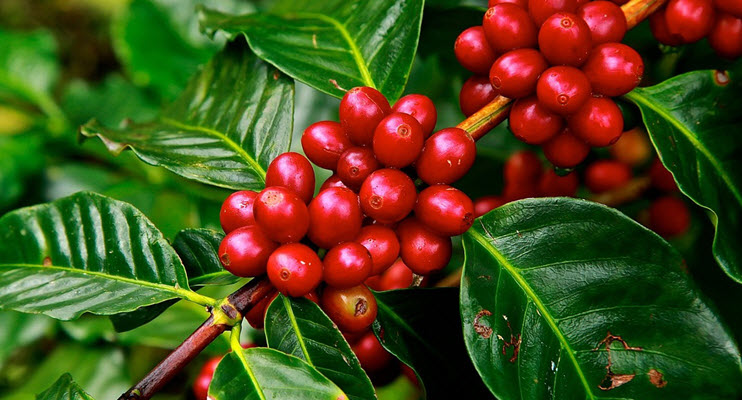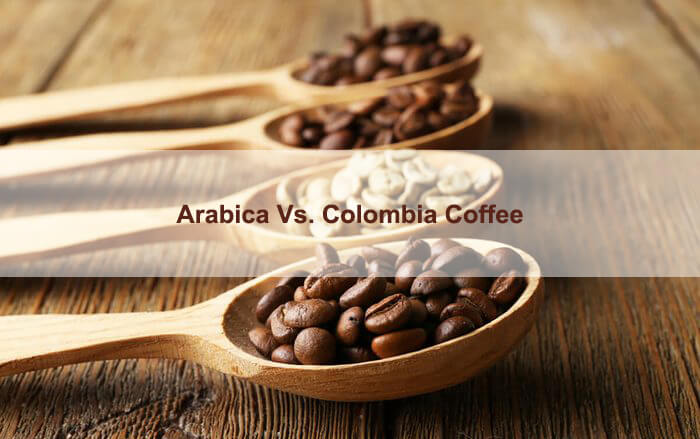Choosing the right coffee can be overwhelming with so many buzzwords; I was positively ost when I first started drinking coffee.
Fortunately, I put my head down and discovered why the type of coffee plant and location are so important to coffee lovers and why Arabica vs. Colombian coffee is something to take heed of to find your ideal drink.
Table Of Contents
What is Arabica Coffee?
Arabica coffee is coffee derived from the Coffea Arabica plant, not to be confused with Robusta coffee from the Coffea canephora plant. The coffee beans come from the pits in the fruit of this plant, known as coffee cherries.
These beans contain less caffeine than Robusta but make a more pleasant, less bitter cup of coffee.
Origins of Arabica Coffee
The Coffea Arabica plant was originally from Ethiopia, but it is commonly farmed in Central and East Africa, Latin America, and India.
It’s not uncommon to see coffee made from different blends.
For example, Arabica coffee is sourced from different countries in one blend. This still counts as Arabica coffee, but coffee labeled as a blend of Arabica and Robusta beans does not technically count as Arabica coffee.
Different Types of Arabica Coffee

There are different strains of the Arabica coffee plant; the main two are Typica and Bourbon.
- Typica [1] roasts have smooth, fruity notes. Typica Arabica coffee is also known as Jamaica Blue Mountain coffee.
- Bourbon [2] coffee has chocolatey, nutty notes. You may also see it spelled “Borbón.”
What is Colombian Coffee?
To put it simply, Colombian coffee is coffee grown in Colombia, but it is typically processed a little differently from regular Arabica coffee too.
It typically tastes smoother than other kinds of Arabica coffee.
Origins Of Colombian Coffee
Colombian coffee is typically grown from the Coffea Arabica plant. There are essentially only two kinds of coffee beans; Arabica and Robusta, so Colombian coffee is technically a type of single-origin Arabica coffee.
A coffee blend sourced from multiple regions, even if one of those is Colombia, will technically not count as pure Colombian coffee.
Different Types Of Colombian Coffee

Colombia’s coffee-growing region is vast, so not all Colombian coffee will taste identical.
Coffee grown in the lower altitudes receiving more sun tend to be less acidic but tastes more robust. Whereas the coffee grown in the higher regions of the country and much sweeter and more acidic.
So, be sure to read the label on your Colombian coffee to choose the one best suited to your tastes.
It’s not unheard of for Robusta coffee to be grown in Colombia, but it is much less common.
The Differences Between Arabica and Colombian Coffee
Location
Coffee grown outside Colombia is not considered Colombian coffee. While Arabica beans can be grown, harvested, and roasted anywhere with a suitable climate, including in Colombia.

Taste
Given that Arabica and Colombian coffee come from the same plant, you might assume they taste identical. However, the tastes are different.
A lot influences how coffee tastes and smells. So, the different elevation levels, soil types, and climate in Colombia impact the flavor.
Arabica beans can usually grow as low as 500 meters above sea level [3], while Colombian coffee is typically grown on slopes between 1,200 meters to 1,800 above sea level.
Preparation
You may have heard of “washed Arabica,” another name for Colombian coffee. Coffee is typically not washed but is not exclusive to Colombian coffee. Many specialty roasts will wash their beans, but they may not be labeled as Washed Arabica.
When harvesting Arabica coffee, it is generally separated from the coffee fruit and allowed to dry in the sun.
When harvesting Colombian coffee, the cherries are mashed, and then the residue is washed off the beans over a few days before the beans dry. This removes some of the fruity taste from the coffee beans, resulting in a more robust and smoother drink.
Bonus: if you don’t know whether to choose a manual coffee grinder or an electric coffee grinder, check out our research here.
Size
While both beans come from the Coffea Arabica plant, the plant seems to be a little smaller and shorter in Columbian farms due to the difference in the climate. This will also impact how the coffee turns out as it may receive a little less heat and sunshine.

With that said, the actual beans themselves do not seem to be smaller than regular Arabica beans.
Price
While coffee prices can vary depending on your location, generally, Colombian coffee is more expensive.
This is because Colombian coffee can only be grown in one region, so naturally, there is going to be less of it than regular Arabica coffee.
The price difference is highly unlikely to change anytime soon, as climate change [4] is making it even more difficult to produce Colombian coffee.
Caffeine
The difference in preparation, growing conditions, and roast will impact how much caffeine is in coffee.
Colombian coffee and Arabica coffee usually have similar caffeine levels, although the washing process may strip Colombian coffee of some caffeine.
One espresso shot made from Colombian coffee could contain between 30 and 50 mg of coffee [5]. An espresso shot made from Arabica coffee can contain around 65 mg of caffeine [6].
Remember how light or dark the roast is and how it was brewed will impact the caffeine content.
FAQs About Arabica Vs. Colombian Coffee
Is Colombian coffee the best in the world?
Determining what kind of coffee is the best in the world is subjective.
Many coffee lovers would argue that Colombian coffee is the best in the world because it tastes smoother and less fruity than standard Arabica beans.
Does Colombian coffee have more caffeine?
Arabica coffee usually has more caffeine than Colombian coffee, but only marginally so. The coffee content varies drastically depending on the preparation method and how light or dark the roast is.
An 8oz cup of Colombian coffee can contain up to 200 mg of caffeine, but often much less. Arabica can contain a similar amount but typically averages between 60 mg to 120 mg of caffeine per 8-oz cup.
The Final Words
If you like a smooth cup of coffee that emphasizes coffee’s natural flavor profile, you’ll love a cup of Colombian coffee.
For those who want more caffeine, but do not like Robusta coffee, then you will likely prefer standard Arabica coffee.


Nicely done! Your presentation (article) explaining the differences of Arabica Vs. Colombia Coffee was clear, concise and, for me, actionable. I feel a bit more enlightened now than I was this morning and will be looking forward to discern differences in my coffee drinking choices.
Thank you.